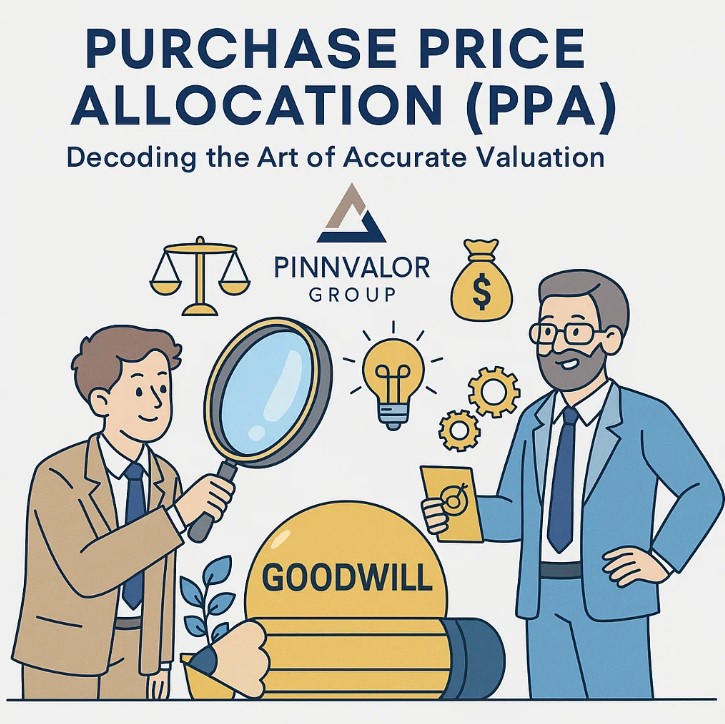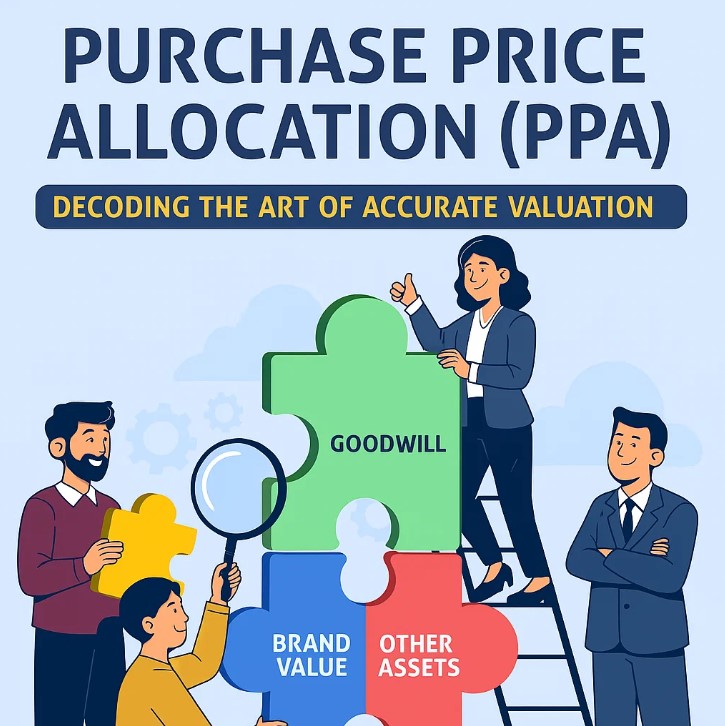
Purchase Price Allocation (PPA): Decoding the Art of Accurate Valuation
In the world of mergers and acquisitions (M&A), accurately valuing the assets and liabilities of a business is crucial. Purchase Price Allocation (PPA) is a critical process that ensures the purchase price paid in a transaction is properly allocated to the acquired assets and assumed liabilities. This not only provides transparency but also ensures compliance with accounting standards like IFRS 3 and ASC 805.
Ever wondered how businesses determine the true value of their acquisitions?
Goodwill, intangible assets, and fair value aren’t just accounting terms—they’re the keys to understanding what a business is truly worth. Mastering PPA transforms deals into informed decisions.
What is Purchase Price Allocation (PPA)?
Purchase Price Allocation (PPA) is the accounting process of assigning the total purchase price of a business to its individual assets and liabilities based on their fair market value at the acquisition date. It helps in reflecting the true value of the acquired company in the acquirer’s financial statements.
Why is PPA Important?
- Compliance with Accounting Standards: PPA is mandatory under IFRS 3 (Business Combinations) and ASC 805 (U.S. GAAP), ensuring proper reporting of acquisitions.
- Tax Implications: Allocation affects depreciation, amortization, and tax liabilities.
- Financial Transparency: Provides investors and stakeholders with a clear picture of the value of tangible and intangible assets.
- Strategic Decision-Making: Helps management understand which assets are contributing the most value and informs future business strategies.
Steps in Purchase Price Allocation
- Determine the Purchase Price: The total consideration paid, including cash, stock, or other instruments.
- Identify Tangible and Intangible Assets: Classify assets like property, plant, equipment, inventory, patents, customer relationships, and trademarks.
- Measure Fair Value: Assign fair market value to each asset and liability using recognized valuation methods.
- Allocate Purchase Price: Distribute the purchase price among the identified assets and liabilities. Any excess of purchase price over fair value is recognized as Goodwill.

Methods of Valuation for PPA
Valuing assets and liabilities accurately is the cornerstone of PPA. Common valuation methods include:
- Market Approach: Compares the asset or business to similar entities in the market.
- Income Approach: Calculates the present value of expected future cash flows from the asset.
- Cost Approach: Determines the replacement cost of the asset minus depreciation.
Challenges in Purchase Price Allocation
- Intangible Assets Valuation: Assigning fair value to brands, patents, or customer relationships can be subjective.
- Complex Deal Structures: Multi-element deals with contingent considerations complicate PPA.
- Regulatory Compliance: Ensuring adherence to accounting standards across jurisdictions.
- Data Limitations: Lack of historical data for fair valuation can affect accuracy.
Impact of PPA on Financial Statements
PPA affects multiple areas of financial reporting:
- Goodwill Recognition: Excess purchase price over fair value of net assets is recorded as goodwill.
- Depreciation and Amortization: Fair-valued assets affect future depreciation and amortization expenses.
- Tax Planning: Allocated values influence deferred tax assets and liabilities.
Conclusion
Purchase Price Allocation (PPA) is more than a compliance exercise—it is a strategic tool that helps companies understand the true value of acquisitions. Accurate PPA ensures transparent reporting, supports tax planning, and provides insights into asset utilization. In today’s competitive business environment, mastering PPA is essential for any organization involved in M&A transactions.
